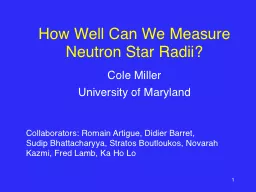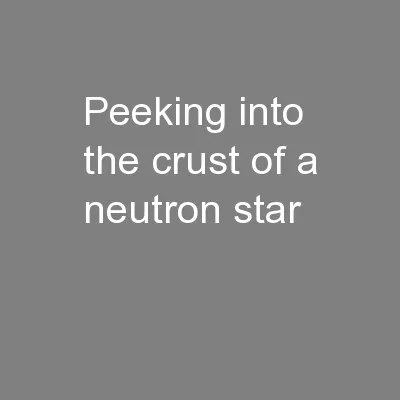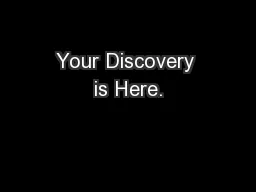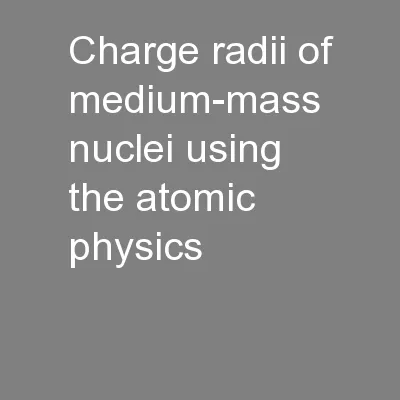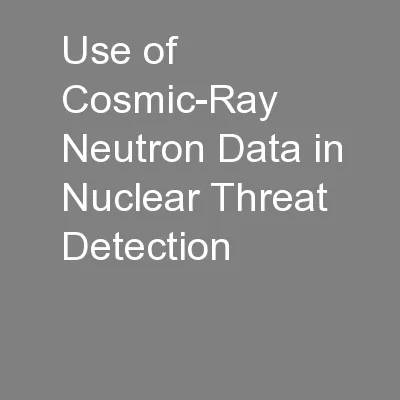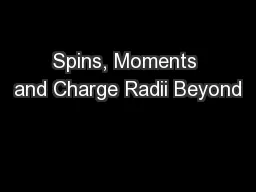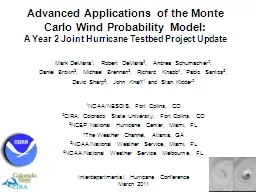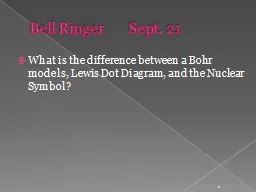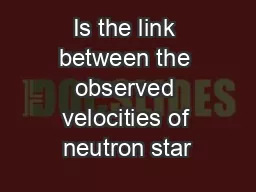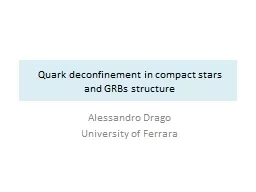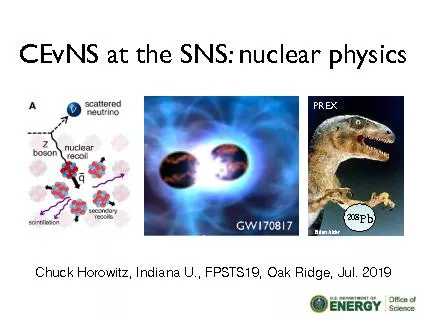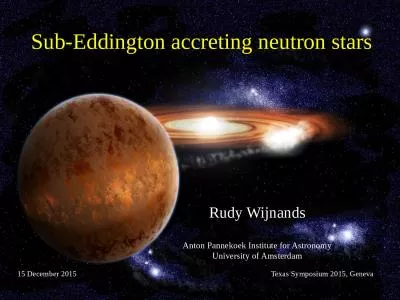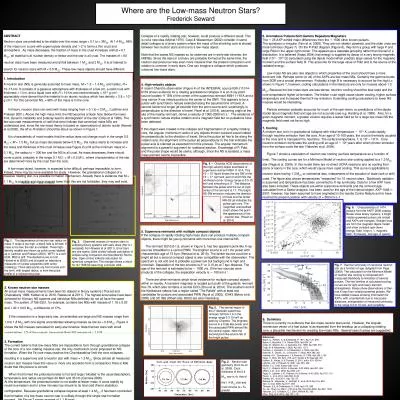PPT-How Well Can We Measure Neutron Star Radii?
Author : liane-varnes | Published Date : 2017-12-16
Cole Miller University of Maryland 1 Collaborators Romain Artigue Didier Barret Sudip Bhattacharyya Stratos Boutloukos Novarah Kazmi Fred Lamb Ka Ho
Presentation Embed Code
Download Presentation
Download Presentation The PPT/PDF document "How Well Can We Measure Neutron Star Rad..." is the property of its rightful owner. Permission is granted to download and print the materials on this website for personal, non-commercial use only, and to display it on your personal computer provided you do not modify the materials and that you retain all copyright notices contained in the materials. By downloading content from our website, you accept the terms of this agreement.
How Well Can We Measure Neutron Star Radii?: Transcript
Cole Miller University of Maryland 1 Collaborators Romain Artigue Didier Barret Sudip Bhattacharyya Stratos Boutloukos Novarah Kazmi Fred Lamb Ka Ho Lo Measuring stellar radii. X-ray binaries. Rudy . Wijnands. Anton . Pannekoek. Institute for Astronomy. University of Amsterdam. 3 August 2015. Lorentz center, Leiden. Low- versus high-mass X-ray binaries. Low-mass X-ray binaries. Nathalie . Degenaar. . University of Michigan. X-ray observations. Interior properties. Thermal evolution. Neutron stars . in transient X-ray binaries. Quiescence. :. No/little accretion. Faint X-ray emission. The Pulsar Search Collaboratory. Questions We Will Answer. What is a . pulsar. ?. Why do astronomers study pulsars?. What is the . PSC. ?. How can . you. get involved?. What is a pulsar?. A pulsar is a . Magdalena Kowalska. CERN, PH-Dept.. kowalska@cern.ch. . below. Outline . 2. Laser spectroscopy on radioactive nuclei. Optical isotope shifts. A long way from isotope shifts to charge radii. Take-home message . and Other Applications: Hydrology +. Neutron Monitor Community Workshop—Honolulu, Hawaii . October . 24-25, 2015. Physicist. National Urban Security Technology Laboratory . Science and Technology Directorate. 48. Ca. INTC-P-313. M.L. Bissell - On behalf of COLLAPS . Background. . . Program initiated with IS-484 - . “. Ground-state properties . of . K-isotopes from laser and . β. -NMR . spectroscopy. A Year 2 Joint Hurricane . Testbed. Project Update. . Mark DeMaria. 1. , Robert DeMaria. 2. , Andrea Schumacher. 2. , . Daniel Brown. 3. , Michael Brennan. 3. , Richard Knabb. 4. , Pablo Santos. 5. What is the difference between a Bohr models, Lewis Dot Diagram, and the Nuclear Symbol? . 1. Periodicity . Periodic Trends . 2. Periodic Law . The chemical and physical properties of the elements are periodic functions of their atomic numbers; properties of the elements occurred at repeated intervals called periods.. N. eutron . Stars Foreseen. . Supernova . End Products?. When a . supernova. goes off, we can speculate that:. The star might blow itself to smithereens, . scattering all its material into space and leaving . progenitors a simple mass relationship?. John . Bray. PhD candidate. Supervisor Dr. J.J Eldridge. Crab nebula : . Image Credit : . NASA, ESA, J. Hester, A. Loll (ASU). Outline. The evidence for `kicks’. and . GRBs structure. Alessandro Drago. University. of Ferrara. Outline. What. do . we. . learn. from the . existence. of . stars. of 2 . M. s. . ?. Are . hyperons. . excluded. ? . Are . hybrid. !W"0.05 Rudy . Wijnands. Anton . Pannekoek. Institute for Astronomy. University of Amsterdam. 15 December 2015. Texas Symposium 2015, Geneva. X-. ray. . luminosity. Quiescence. Outburst. Low-mass X-ray binary transients. Frederick Seward. ABSTRACT. Neutron stars are predicted to be stable over the mass range ≈ 0.1 to ≈ 3M. ⊙. . At 1.4 M. ⊙. , 98% of the mass is in a core with . supernuclear. density and 1-2 % forms a thin crust and atmosphere . As mass...
Download Document
Here is the link to download the presentation.
"How Well Can We Measure Neutron Star Radii?"The content belongs to its owner. You may download and print it for personal use, without modification, and keep all copyright notices. By downloading, you agree to these terms.
Related Documents

